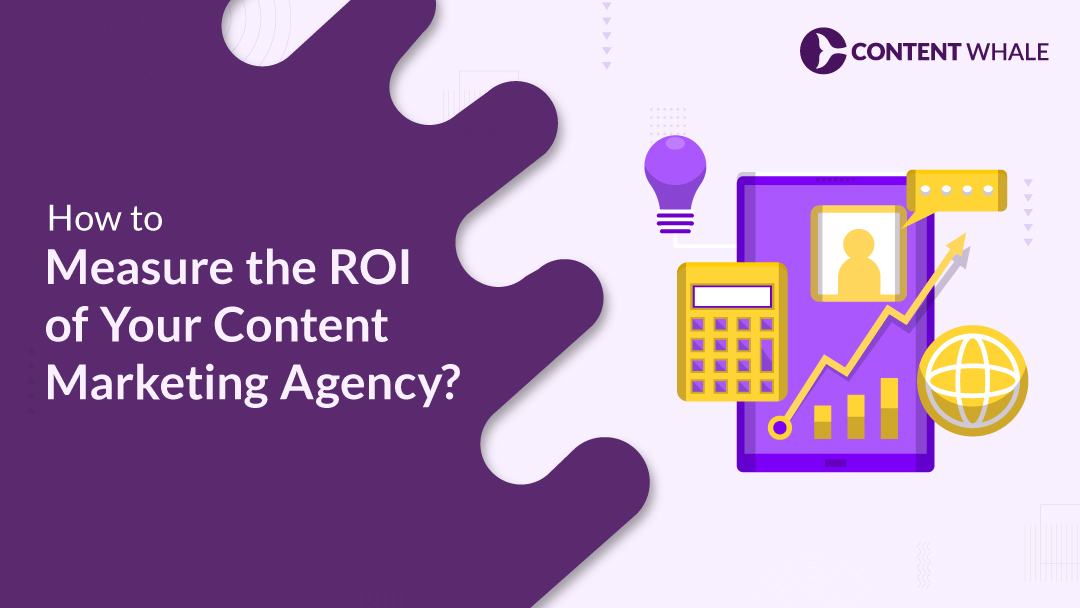Google Analytics has seen significant changes over the years, with the most notable shift being the transition from Universal Analytics to GA4. This shift brought advanced tracking capabilities and better integration with Google Ads, catering to modern marketing needs. The Google Analytics updates September 2024 introduce a fresh set of tools that leverage AI in analytics, such as enhanced anomaly detection, improved event tracking, and extended data retention options.
These updates aim to streamline user data analysis and provide more actionable insights. Staying on top of these changes is essential for businesses that want to maximize their data-driven marketing strategies. By understanding the latest GA4 new features and upcoming analytics trends 2024, companies can improve their user engagement metrics and make more informed decisions. These updates ensure you’re equipped to measure your marketing efforts effectively while prioritizing data privacy.
1. AI-Powered Anomaly Detection & Trend Change Insights
The Google Analytics updates September 2024 bring enhanced AI in analytics that focuses on improving anomaly detection and long-term trend insights. These updates are designed to provide faster, actionable insights for marketers and business owners.
Key Features:
A) Enhanced Anomaly Detection
- GA4 now offers improved anomaly detection, making it easier to identify sudden changes in event tracking or user behavior.
- These alerts notify marketers of unusual spikes or drops in metrics, helping them take immediate action.
- For example, e-commerce sites can quickly address sudden increases in product demand or pinpoint issues like a drop in transaction rates due to technical problems.
B) Trend Change Detection
- This new feature goes beyond detecting short-term anomalies by identifying long-term shifts in user behavior and user engagement metrics.
- Marketers can use this tool to spot gradual changes in user trends and make data-backed adjustments to their strategies.
- For instance, if a certain product category consistently shows increased interest, businesses can reallocate their Google Ads integration budget to target that category more aggressively.
Benefits:
- Proactive decision-making: Businesses can act faster with real-time data on unusual behavior.
- Optimized marketing efforts: By recognizing trend changes early, companies can adjust campaigns and improve performance.
- Improved audience targeting: With deeper insights into evolving behaviors, marketers can fine-tune their strategies for better results.
2. Increased Data Retention Limits and Event Parameters
One of the most valuable Google Analytics updates September 2024 is the extension of data retention and expanded event parameters, providing businesses with more flexibility and control over their analytics.
Key Updates:
A) Extended Data Retention Limits
- GA4 now allows businesses to retain data for up to 50 months for user and event data, which is a significant upgrade from the previous limit of 14 months. This feature is particularly beneficial for large enterprises that need to perform year-over-year comparisons or track long-term trends in user engagement metrics.
- For instance, businesses can now analyze customer behavior over multiple years, helping them create more data-driven strategies for marketing and product development.
B) Increased Event Parameters
- GA4 has also introduced expanded event tracking capabilities, allowing businesses to capture more detailed user interactions. This update includes the ability to add more custom parameters to events, offering greater granularity in understanding user actions.
- For example, mobile apps can now track additional user actions such as swipe gestures, video interactions, or button clicks, providing more comprehensive insights into app performance.
Benefits:
- Longer data retention supports deeper analysis and better long-term planning.
- More granular event tracking provides a clearer picture of user behavior, enabling businesses to optimize their marketing efforts and improve the Google Ads integration.
- These GA4 new features give businesses the tools they need to enhance data analysis, while also maintaining compliance with global data privacy regulations.
3. Enhanced Privacy Controls & Data Collection
The Google Analytics updates September 2024 deliver significant advancements in data privacy and collection practices, allowing businesses to meet evolving privacy regulations like GDPR and CCPA. These updates ensure that companies can balance gaining valuable insights while respecting user consent and data protection requirements.
Key Updates:
A) Granular Privacy Controls
- Among the GA4 new features, automatic IP anonymization is now enabled by default, removing sensitive geographic data at the point of collection. This minimizes the risk of handling personally identifiable information while still allowing for accurate reporting on broader metrics. Additionally, businesses can now configure detailed privacy settings to adjust data collection based on specific user consent.
B) Data Minimization and Compliance
- GA4 emphasizes data minimization, collecting only essential data to fulfill analytics goals. This supports compliance with global privacy laws by ensuring businesses collect the least amount of personal data necessary. With AI in analytics, businesses can still extract meaningful insights, such as user behaviors, without compromising user trust or violating privacy regulations.
C) Consent Mode Integration
- GA4’s Consent Mode is designed to respect user consent choices dynamically. For instance, if a user opts out of certain data collection, GA4 adjusts how it collects and processes data accordingly. This ensures that businesses continue to receive basic anonymized data, such as aggregated user engagement metrics, even when users decline cookies or tracking permissions.
Here a quick insight of Enhanced Privacy Controls & Data Collection features in Google Analytics updates September 2024:
| # | Feature | Description | Benefit |
| 1 | IP Anonymization | Automatically anonymizes IP addresses to protect user identity. | Ensures user privacy while allowing broader geographic analysis. |
| 2 | Consent Mode | Adjusts tracking behavior based on user consent, enabling compliant data collection. | Allows businesses to collect some data even when users decline cookies, balancing privacy and insights. |
| 3 | Data Minimization | Collects only essential data through event-based tracking, avoiding unnecessary data accumulation. | Reduces privacy risks by limiting the amount of stored data, adhering to regulations like GDPR. |
| 4 | Data Retention Controls | Allows businesses to set data retention periods (up to 50 months), controlling how long data is stored. | Helps businesses comply with privacy laws while maintaining historical data for analysis. |
| 5 | Data Deletion Tools | Provides the ability to delete specific user data from Google Analytics when requested. | Ensures compliance with user requests for data removal, crucial for privacy regulations. |
| 6 | Data Encryption | Uses encryption protocols for data both in transit and at rest, protecting data from unauthorized access. | Safeguards sensitive user data during transmission and storage. |
Benefits:
- Enhanced user trust: With better privacy controls, businesses can gain user trust by transparently managing data.
- Compliance with regulations: These features help businesses maintain compliance while still gaining valuable analytics insights.
4. AI-Driven Predictive Insights for Improved ROI
Among the Google Analytics updates September 2024, the introduction of enhanced AI-driven predictive insights is a game-changer for businesses looking to optimize their marketing efforts and maximize returns. Leveraging machine learning, GA4 now offers detailed predictions on user behaviors, enabling businesses to make more informed, data-driven decisions.
Key Features:
A) Predictive Metrics for Marketing Success
- GA4 new features include predictive metrics like purchase probability, churn probability, and predicted revenue. These insights empower businesses to target high-value users by predicting their likelihood of converting or making repeat purchases. For example, using GA4’s “Likely 7-day purchasers” metric, businesses can create focused ad campaigns to engage users who are most likely to buy within a week, optimizing both effort and budget.
B) Integration with Google Ads for Smarter Campaigns
- The deeper Google Ads integration enables the seamless use of these predictive insights to enhance ad campaigns. Businesses can now export these predictive audiences directly into Google Ads to refine targeting and allocation, ensuring ad budgets are spent on the most promising users. By integrating AI in analytics and predictive data, businesses can improve conversion rates and drive better user engagement metrics while minimizing marketing costs.
Benefits:
- Proactive marketing strategies: Predictive insights allow businesses to adjust campaigns in real-time based on anticipated user behavior, offering a personalized experience to key segments.
- Improved ROI: By focusing marketing efforts on users with higher conversion probabilities, businesses can drive more conversions and reduce customer churn, increasing overall marketing efficiency.
5. Manual Traffic Source Dimensions for Advanced Tracking
One of the notable features introduced with the Google Analytics updates September 2024 is the expansion of manual traffic source dimensions, offering marketers deeper insights into traffic sources and campaign performance. These new dimensions provide a more granular understanding of where users come from, enhancing cross-channel analysis and improving marketing attribution.
Key Updates:
A) Expanded Traffic Source Dimensions
- GA4 has added eight new manual traffic source dimensions, allowing marketers to customize how they track user acquisition. These dimensions include manual source, manual medium, manual campaign name, and manual content, among others. This update is particularly valuable for those who want a finer breakdown of traffic beyond the default categories like “organic” or “paid.” For example, businesses can now track specific referral sources, like “email_newsletter” or “social_media_ad,” for a clearer view of what drives traffic.
B) Multi-Level Tracking: User, Session, and Event-Scoped Data
- The new dimensions apply to user-level, session-level, and event-level tracking, providing comprehensive insights. This means businesses can track specific traffic sources across the entire user journey or within a particular session, enabling more accurate measurement of campaign performance and user behavior.
C) Improved Cross-Channel Reporting
- By leveraging these dimensions, businesses can improve their cross-channel performance analysis. This helps marketers better understand how traffic from multiple platforms, such as Google Ads, social media, and email campaigns, contributes to overall user engagement and conversions
Benefits:
- More accurate attribution: These dimensions enable a deeper understanding of what channels are driving traffic.
- Enhanced reporting: Businesses can build more tailored reports, focusing on specific campaigns or channels to optimize marketing efforts.
6. Integration with Google Ads Subproperties
The Google Analytics updates September 2024 bring significant enhancements to Google Ads integration, particularly with subproperties in GA4. This update allows businesses to link their GA4 properties and subproperties to the same Google Ads account, offering a more detailed view of campaign performance across various business segments.
Key Features:
A) More Granular Insights
- With the introduction of subproperties, businesses can now analyze ad performance at a more granular level. Each subproperty represents a distinct part of the business, allowing better insights into how different campaigns and ad segments perform across platforms. This leads to more accurate measurement of user engagement metrics and campaign effectiveness.
B) Cross-Platform Tracking
- The improved integration makes it easier to track event tracking and conversions across different platforms, ensuring that businesses get a holistic view of user behavior. This feature optimizes the connection between Google Ads and GA4 new features, providing deeper insights into customer journeys and helping businesses allocate their ad budget more effectively.
Conclusion
The Google Analytics updates September 2024 offer businesses new opportunities to refine their digital marketing strategies by leveraging powerful GA4 new features like enhanced AI in analytics, improved privacy controls, and more granular tracking capabilities. From anomaly detection to predictive insights and enhanced Google Ads integration, these updates help businesses stay ahead of the latest analytics trends 2024 and maximize user engagement metrics.
These features not only enhance data accuracy but also ensure compliance with global privacy standards. By fully utilizing the new event tracking capabilities and manual traffic source dimensions, businesses can gain a deeper understanding of their customers’ journeys, optimize ad spend, and improve return on investment.
——
This blog showcases Content Whale’s expertise in creating SEO-optimized content that doesn’t just rank—it drives growth. If you’re ready to enhance your online presence, increase traffic, and achieve your business objectives, we’re ready to help. Get in touch with us today, and let’s develop content that fuels your success.
FAQs
1. What is the biggest update to Google Analytics in September 2024?
The most significant update is the enhanced AI-driven insights. These include improvements in anomaly detection and trend analysis, providing businesses with real-time alerts on unusual patterns and long-term shifts in user engagement metrics.
2. How does anomaly detection in GA4 help marketers?
Anomaly detection uses AI in analytics to automatically flag unexpected changes in user behavior, such as traffic spikes or declines, enabling marketers to react swiftly to potential issues or opportunities.
3. How do the new data retention options benefit businesses?
GA4 now offers expanded data retention of up to 50 months. This extended period helps businesses maintain a longer history of their event tracking data, making it easier to analyze trends and performance over time.
4. What are the new privacy controls in Google Analytics 4?
GA4 new features include advanced data privacy settings, such as automatic IP anonymization and improved user consent management, helping businesses stay compliant with global regulations like GDPR and CCPA.
5. How can I use predictive insights from GA4 to improve my ad campaigns?
GA4’s predictive insights allow businesses to identify high-value users likely to convert. By integrating this data with Google Ads, marketers can better target their campaigns, improving ROI and overall ad performance.





